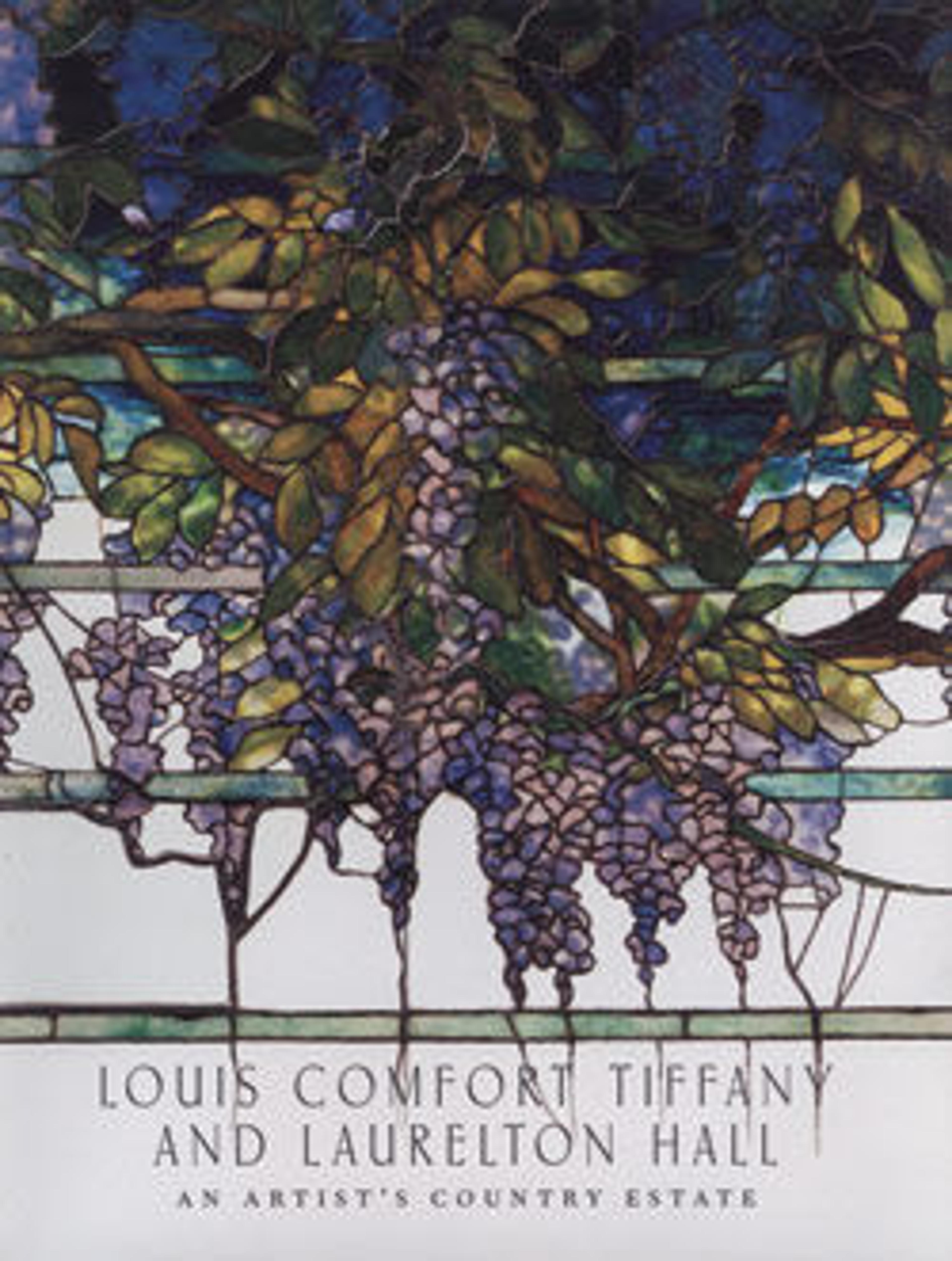Architectural Elements from Laurelton Hall, Oyster Bay, New York
tiles cover the architrave, and geometric mosaics embellish the supporting corbeled arches, from which three bell-shaped lanterns are suspended.
Laurelton Hall was the crowning achievement of Tiffany’s multifaceted career. After he established the Louis C. Tiffany Foundation in 1918, the estate became the site of a residential summer program for artists. In 1957, it was tragically destroyed by fire. Some architectural elements were salvaged from the ruins, including this loggia.
Artwork Details
- Title: Architectural Elements from Laurelton Hall, Oyster Bay, New York
- Designer: Designed by Louis C. Tiffany (American, New York 1848–1933 New York)
- Date: ca. 1905
- Geography: Made in Oyster Bay, New York, United States
- Culture: American
- Medium: Limestone, ceramic, and Fravrile glass
- Dimensions: 21 x 23 ft. (640.1 x 701 cm)
- Credit Line: Gift of Jeannette Genius McKean and Hugh Ferguson McKean, in memory of Charles Hosmer Morse, 1978
- Object Number: 1978.10.1
- Curatorial Department: The American Wing
Audio
3810. Loggia from Laurelton Hall
ALICE COONEY FRELINGHUYSEN: Louis Comfort Tiffany designed this four-columned entrance loggia for his own residence, the last house he designed for himself. Called Laurelton Hall, it was situated in Oyster Bay, New York, on a hill overlooking Long Island Sound. The capitals at the top of each column are astonishing for both their exoticismand naturalism. Each glazed-pottery depiction shows a different flower, accurate and easily identifiable as a specific type. From left to right, they are the lotus, dahlia, poppy, and saucer magnolia. Starting from the bottom of each group of flowers, you see the three stages of growth—the bud, the flower in full-bloom, and the seed pod---showing Tiffany’s interest in the cycle of life. The long stems in various shades of green are made of many individual pieces of glass. Tiffany’s mission was in tune with the principles of the Aesthetic Movement. He sought to combine decorative art and architecture, incorporate many sources, and integrate these elements harmoniously with an original artistic sensibility. He accomplished that goal magnificently in this loggia and throughout his extraordinary home. He created a lavish setting, using his own stained-glass windows and lighting fixtures such as the three paneled lanterns you see here. Tiffany incorporated objects from his large and varied collections, which included Japanese prints, Chinese pottery and porcelain, Asian carpets, Roman glass, and Native-American basketry. The windows and paintings of his own design like those seen here display Tiffany’s great love for nature. He also designed hanging gardens with tropical plants, waterfalls, and fountains for the surrounding landscape. Tragically, Laurelton Hall was destroyed by fire in 1957. This loggia is one of the few architectural elements that was salvaged from the fire.
More Artwork
Research Resources
The Met provides unparalleled resources for research and welcomes an international community of students and scholars. The Met's Open Access API is where creators and researchers can connect to the The Met collection. Open Access data and public domain images are available for unrestricted commercial and noncommercial use without permission or fee.
To request images under copyright and other restrictions, please use this Image Request form.
Feedback
We continue to research and examine historical and cultural context for objects in The Met collection. If you have comments or questions about this object record, please contact us using the form below. The Museum looks forward to receiving your comments.
